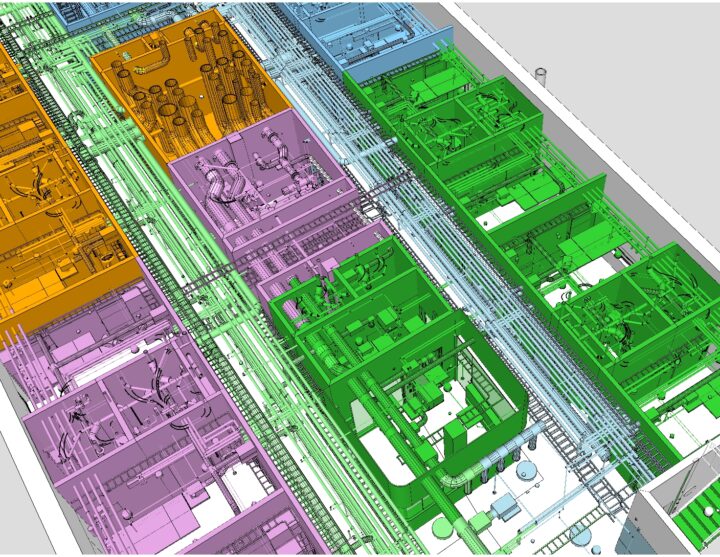Applying Data Science to BIM: a Simplebim FAQ
19.12.2024
It’s no secret that the construction industry has been slow to embrace digitalisation and in particular, BIM.
Whilst there are many reasons for this, the quality of BIM data is a significant one.
That’s why we created Simplebim 15 years ago, to apply the principles of data science to BIM to help unlock the value of the vast amounts of raw data generated by the multi-disciplinary construction industry.
But what is Simplebim and what does it actually do?
Coincidentally, that’s the first question we’ve answered in our Simplebim FAQ.
What is Simplebim and what does it actually do?
Simplebim is a BIM data wrangling solution that transforms raw BIM data into clean, consistent and rich information.
Imagine doing a jigsaw but none of the pieces fit together.
The same applies to BIM data. One of the biggest challenges when it comes to getting the most out of BIM is the quality of the data. It comes from multiple sources, is often poor quality and inconsistent.
What Simplebim does is clean up the data, then standardise it. Once it’s standardised, it can be enriched with additional data to suit the use case, then shared with downstream applications and used in IFC or Excel format.
In practice, this means you can:
- Add your own properties to the model, that can be used in every model, from every discipline and in every project.
- Automatically classify the building elements according to your own classifications.
- Calculate consistent quantities from the geometry, independent from the software that created the model.
- Define locations for the building elements in an automated way.
- Enrich your models by deriving new information with formulas or by merging data from external sources.
- Merge and trim your models.
Find out more.
What is data wrangling?
BIM data wrangling. Sounds like hard work doesn’t it? But the good news is: Simplebim does all that hard work for you.
Data wrangling is the process of cleaning, organising, structuring, and enriching raw data to make it more useful for analysis and visualisation purposes. BIM data wrangling does this especially for BIM (Building Information Model) models.
What sets Simplebim apart?
Quite simply, Simplebim does data management differently. Unlike the old, manual way of handling data, Simplebim centralises and automates these processes, leading to a smoother data flow and less hassle for you.
Centralised processing is a common way to manage data in other industries, but yet to be deployed in construction. Until now.
Simplebim is packed with innovative tools designed specifically for the construction industry and is the only software on the market that has the complete set of tools for BIM data wrangling.
It’s not just theoretical; it’s tried and tested with top companies like NCC, Bylor, Royal BAM Group and SRV. This means that the innovations are driven by the practicalities and specifics of the construction industry.
Also, Simplebim is an openBIM software application. It transforms BIM data into valuable data for every construction professional, not just the BIM and data-savvy types.
Where does Simplebim fit in the BIM workflow?

There’s lots of BIM software out there: all fulfil different functions in the BIM workflow.
These functions include:
- Creating BIM data
- Storing BIM data
- Analysing BIM data
- Communicating BIM data
So, where does Simplebim fit in?
Simplebim fits nicely in between storing and analysing. For reasons we’ve discussed around quality of data, Simplebim fulfils the vital function of processing the data – cleaning, standardising and enriching – so it can then be analysed.
Is BIM just for design?
In a word, no.
Although the majority of BIM efforts focus on design. This is likely because of the maturity of the model author tool market and because design coordination is one of the easiest things to do from the BIM data management point of view.
Once you’ve unlocked the value of BIM data, though, there’s so much more to be gained in the downstream processes during the production and operation of the building.
Simplebim facilitates this by solving the BIM exchange issues between the designers and the downstream parties.
Find out more.
What is data fabric and how is it relevant to construction?
A data fabric is a framework that integrates and manages data across various sources and platforms, making it easier to access, share, and analyse information.
In construction, the data fabric includes finance, quality, safety, scheduling and procurement data but so often, BIM data is missing. That’s because of the inconsistency of the data, multiple sources, poor quality etc.
Because Simplebim solves this problem with its automated data wrangling, BIM data can become part of the construction data fabric.
Who uses Simplebim?
Simplebim is used by project managers, architects, designers, structural engineers, HVAC engineers, BIM managers and quantity surveyors worldwide, from small consultancies to global construction companies.
Our clients include NCC, SRV, Vinci, Bylor, Royal BAM Group, Rambol, Strabag and many more.
Want to join the growing list of organisations using Simplebim to unlock the value in their BIM data?
Sign up for a free, 15-day trial or get in touch with the team to find out how to get started.


